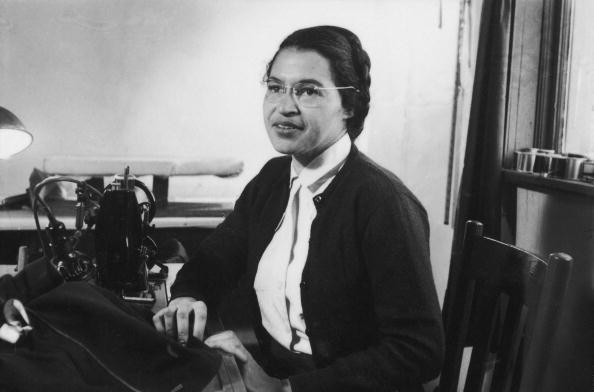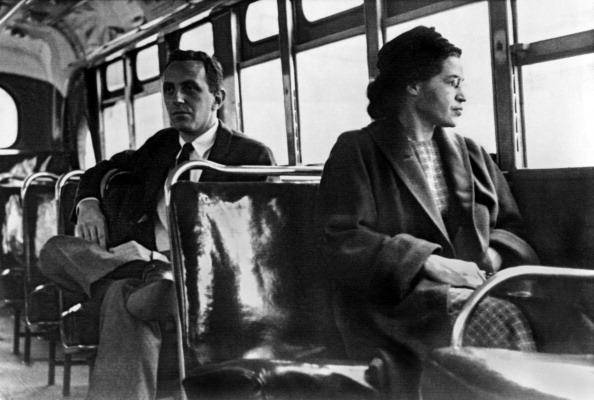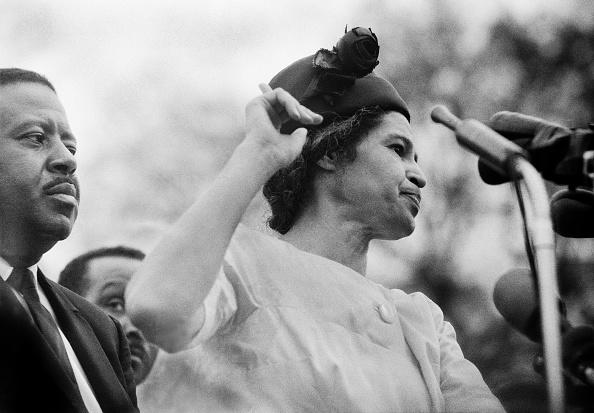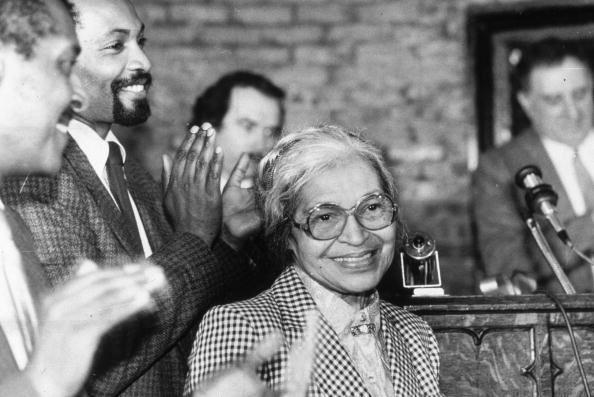Rosa Parks was an activist long before she refused to give up her bus seat, and more things you need to know about the civil rights leader

Today marks the the 62nd anniversary of Rosa Parks’s refusal to give her bus seat to a white man in Montgomery, Alabama. That pivotal December evening in 1955 has long been considered the spark that ignited the Civil Rights Movement. It began the Montgomery Bus Boycott, in which some 40,000 Black bus riders boycotted the public transit system, eventually leading to the city being found in violation of the 14th Amendment and the overturning of racially segregated bus section.
But there is more to Rosa Parks than the tale of a “happenstance” display of defiance that pretty much every American History textbook describes.
Here are five things you may not have known about The Mother of the Civil Rights Movement.
1. Parks had activist roots long before sparking the Montgomery Bus Boycott.
The story many of us have been sold is that, on that fateful day, Parks was simply a tired seamstress who had had enough. That may have very well been true, but this rose-colored retelling ignores the fact that Parks was involved in activism and Black liberation for decades prior to the incident, and had already been secretary of the Montgomery chapter of the NAACP for years. Parks decision not to yield her seat to a white passenger was the result of strategy and planned civil disobedience.
2. Parks wasn’t Black organizers’ first pick as the face of the Civil Rights Movement.
She may be the first name that comes to mind when we think of Montgomery and the Civil Rights Movement, but Rosa Parks was not the first Black woman to stand against racial segregation. Nine months before Rosa Parks rode that bus, a teenager named Claudette Colvin defied Montgomery’s racist bus laws. Colvin refused to vacate her seat to a white woman on March 2nd, 1955. While her lawyer Fred Gray and other Black community leaders discussed filing a civil rights lawsuit on Colvin’s behalf, the consensus was that, because Colvin was a pregnant teenager, Rosa Parks fit into the more wholesome and “respectable” symbol that the community needed to represent the movement.
Rosa Parks was not the first black woman to refuse to give up her seat. Claudette Colvin, Sarah Keys & countless others did too — but because of them, when Parks sat down #OTD 62 years ago she sparked the Montgomery Bus Boycott. Today, #TheMarchContinues pic.twitter.com/C50XQdzZYP
— CRMC (@CivilRightsCntr) December 1, 2017
3. She was vocal about women’s rights and sexual violence.
History has celebrated Parks as the “quiet,” symbol of a serendipitous bus protest, furthering the narrative that rebellion must be peaceful and passive. When, in reality, Parks may have been more radical than you previously thought. She worked to get justice for women like Gertrude Perkins and others who were part of a sexual assault epidemic against Black women in the Jim Crow south. That activism carried well into the later half of her life when Parks pushed for changes in housing, education, and criminal justice laws. She also spoke out against the nomination of Clarence Thomas to the Supreme Court following Anita Hill’s sexual harassment allegations.
4. December 1st, 1955 was not her first bus conflict.
Over a decade earlier, Parks had a run-in with that same bus driver. His name was James Blake, and he had a reputation of harassing Black passengers. In November 1943, Blake attempted to make Parks exit and reenter his bus. When she refused to do so, Blake attempted to push Parks off the bus. Prior to that day in 1955, Parks had managed to successfully avoid riding Blake’s bus.
5. Parks was the first woman to lie in state at the U.S. Capitol.
After Parks passed away at the age of 92 in 2005, her body was brought to the rotunda of the U.S. Capitol building; an honor normally reserved for military leaders and statesmen. The fact that over 30,000 people came to pay their respects is a testament to Parks’s importance in Black History. That’s why it is even more important that, when recounting her story and her role in this country’s fight for racial equality, we recognize that she was much more than a woman who didn’t want to stand up after a long day at work.


